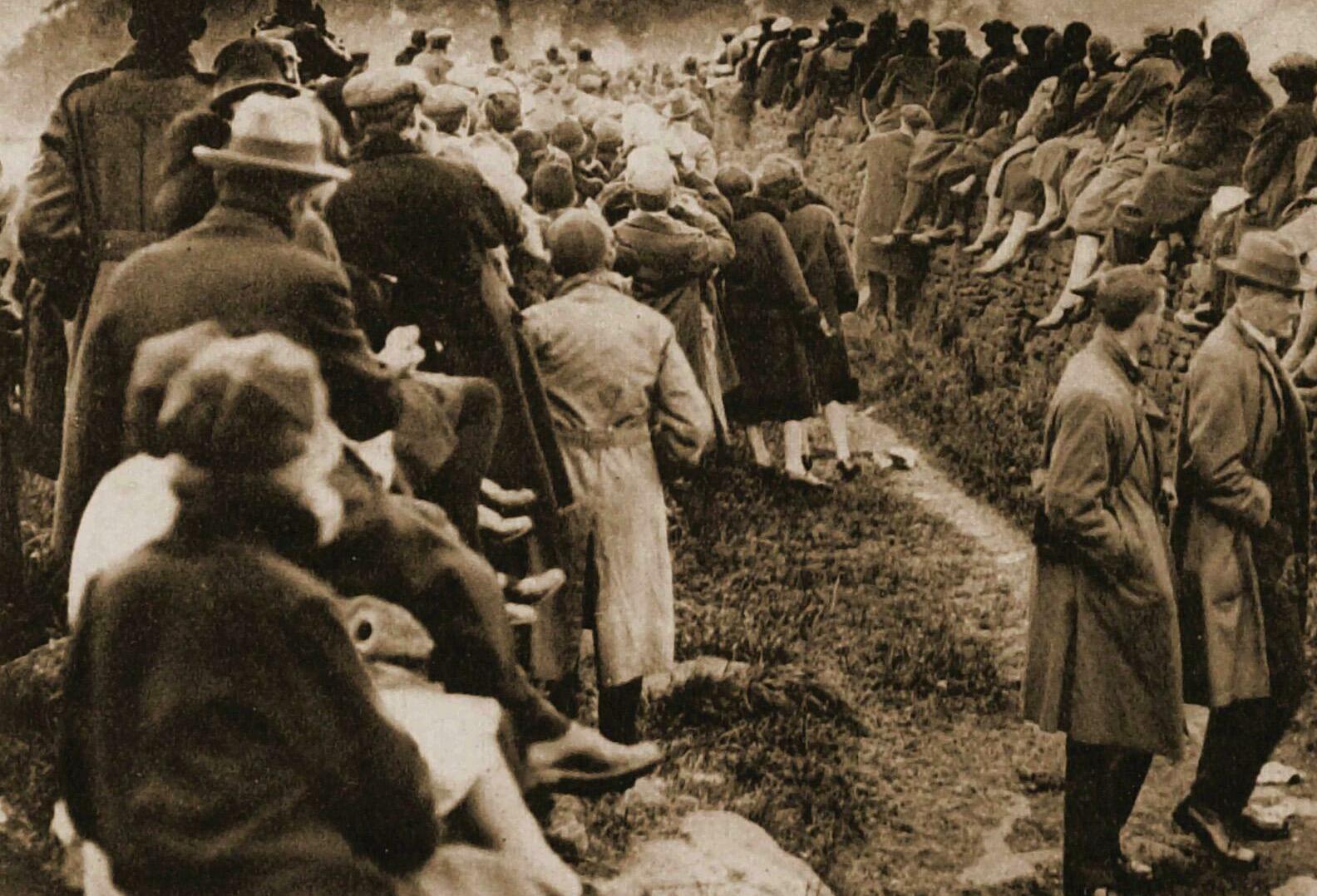
"At the back of us were great blue spaces in the clouds. But now the colour was going out. The clouds were turning pale; a reddish black colour. Down in the valley it was an extraordinary scrumble of red & black; there was the one light burning; all was cloud down there, & very beautiful, so delicately tinted. Nothing could be seen through the cloud. The 24 seconds were passing." Virginia Woolf, 'The Sun and the Fish', 1928
Early on the morning of 29 June 1927, the shadow of the Moon kissed the north of Wales and crossed the north of England. That day saw a total solar eclipse, the first in mainland Britain for over 200 years. The track of totality started at dawn to the southwest of Ireland, passed over the Lleyn Peninsula and Eryri (Snowdonia) in north Wales, before touching the English coast at Southport at 06:24 in the morning local time. Blackpool, Blackburn and Preston in Lancashire, Richmond and Middlesbrough in Yorkshire and Darlington in County Durham all saw total eclipses, as did parts of Liverpool and Durham. The track of totality left the English coast near Hartlepool and continued across the North Sea to Scandinavia and northern Russia. The whole of Britain saw at least a 90 per cent partial eclipse.
From the UK, it was a very short eclipse. Southport, on the centreline of totality, saw only 23 seconds of totality, Wales a second less, the east coast a second more. Yet, despite the short duration and the early time, a lot of people travelled to see it. Resorts such as Southport in Merseyside laid on "AllNight Festivities, including a special Open-Air Band Concert in the Municipal Gardens on June 29th at 3:30am". The newspapers estimated that a quarter of a million people were in the resort to see the eclipse.
British weather strikes
Bu hikaye BBC Sky at Night Magazine dergisinin June 2024 sayısından alınmıştır.
Start your 7-day Magzter GOLD free trial to access thousands of curated premium stories, and 9,000+ magazines and newspapers.
Already a subscriber ? Giriş Yap
Bu hikaye BBC Sky at Night Magazine dergisinin June 2024 sayısından alınmıştır.
Start your 7-day Magzter GOLD free trial to access thousands of curated premium stories, and 9,000+ magazines and newspapers.
Already a subscriber? Giriş Yap

Could We Find Aliens by Looking for Their Solar Panels?- Designed to reflect ultraviolet and infrared, the panels have a unique fingerprint
Researchers searching for life beyond Earth spend a lot of time thinking about what telltale signs might be detectable astronomically. Forms of unambiguous evidence for the presence of life on another world are known as biosignatures. By extension, techno signatures are indicators of activity by intelligent, civilisation-building life.

Antimatter- In our continuing series, Govert Schilling looks at antimatter, the strange counterpart to most of the matter filling our Universe
Particles and corresponding antiparticles are very much alike, except they have opposite electrical charges. For instance, the antiparticle of the electron - known as the positron - has the same tiny mass, but while electrons carry a negative electrical charge, positrons are positively charged.

Where Have All The Milky Way's Early Stars Gone?- Our Galaxy has a curious lack of pristine stars
The Big Bang produced a Universe filled almost exclusively with hydrogen and helium; all other elements - what astronomers call metals - were produced by stars, supernovae and everything that happens later. So if you can pick out a pristine star with no metals polluting it from among the billions in the Milky Way, then you are likely to have a star dating from our Galaxy's earliest days.

Inside The Sky At Night - Two years ago, exoplanet scientist Hannah Wakeford received some of the first data from the JWST
Two years ago, exoplanet scientist Hannah Wakeford received some of the first data from the JWST. In July's Sky at Night, we discovered what she's learned since then.

How to stack DSLR data in Siril
Easily combine multiple frames to boost detailin your astro photos

Lunar occultation of Saturn
You'll need to strike a balance on 21 August to capture the Moon covering the ringed planet

How to plot a variable star light curve
A rewarding project to chart stars that change brightness

Smartphone photography with a telescope
Mary Mcintyre explains how to get impressive night-sky images using your phone

Once-a-century solar storm is overdue
If a Carrington Event struck today it would be catastrophic, says Minna Palmroth

The new era of human spaceflight
There's been a step-change in crewed space missions since the dawn of the 21st century. Ben Evans charts its course and looks ahead to future horizons